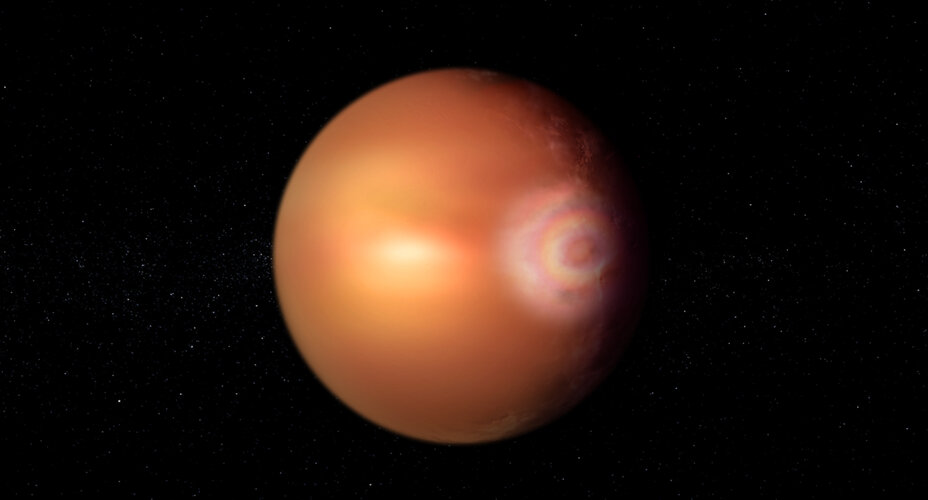
Since its discovery in 2013, WASP-76b has come under intense scrutiny and a bizarrely hellish picture has emerged. One side of the planet always faces the Sun, reaching temperatures of 2400 degrees Celsius. Here, elements that would form rocks on Earth melt and evaporate, only to condense on the slightly cooler night side, creating iron clouds that drip molten iron rain.
But scientists have been puzzled by an apparent asymmetry, or wonkiness, in WASP-76b’s ‘limbs’ – its outermost regions seen as it passes in front of its host star.
Data from different ESA and NASA missions including TESS, Hubble and Spitzer, were also analysed in this revealing study, but it was when ESA’s Cheops and NASA’s TESS worked together that hints of the glory phenomenon began to appear.
Cheops intensively monitored WASP-76b as it passed in front of and around its Sun-like star. After 23 observations over three years, the data showed a surprising increase in the amount of light coming from the planet’s eastern ‘terminator’ – the boundary where night meets day. This allowed scientists to disentangle and constrain the origin of the signal.
“This is the first time that such a sharp change has been detected in the brightness of an exoplanet, its ‘phase curve’,” explains Olivier.
“This discovery leads us to hypothesise that this unexpected glow could be caused by a strong, localised and anisotropic (directionally dependent) reflection – the glory effect.”



